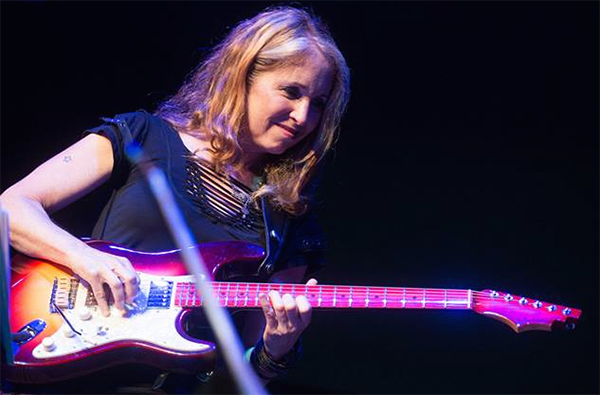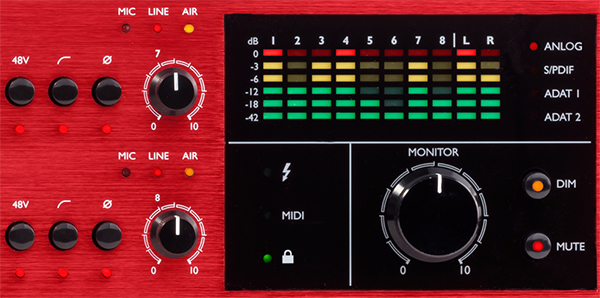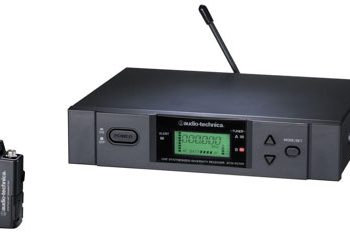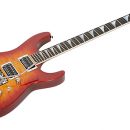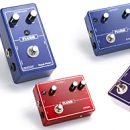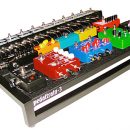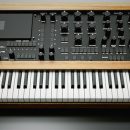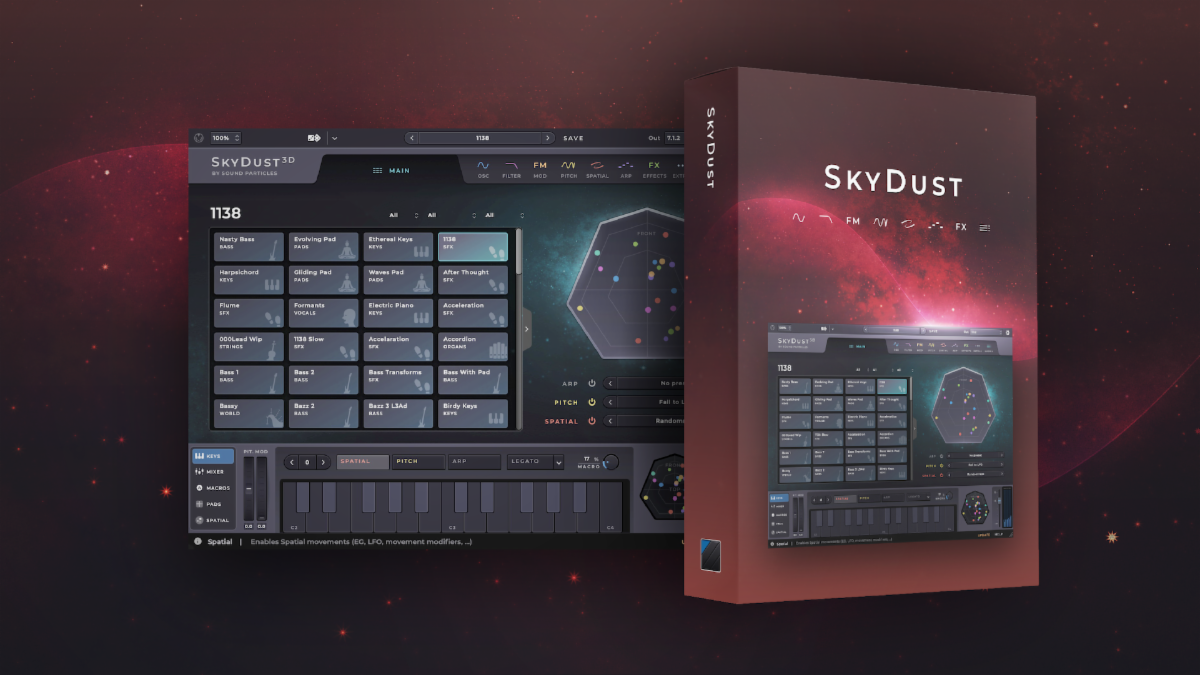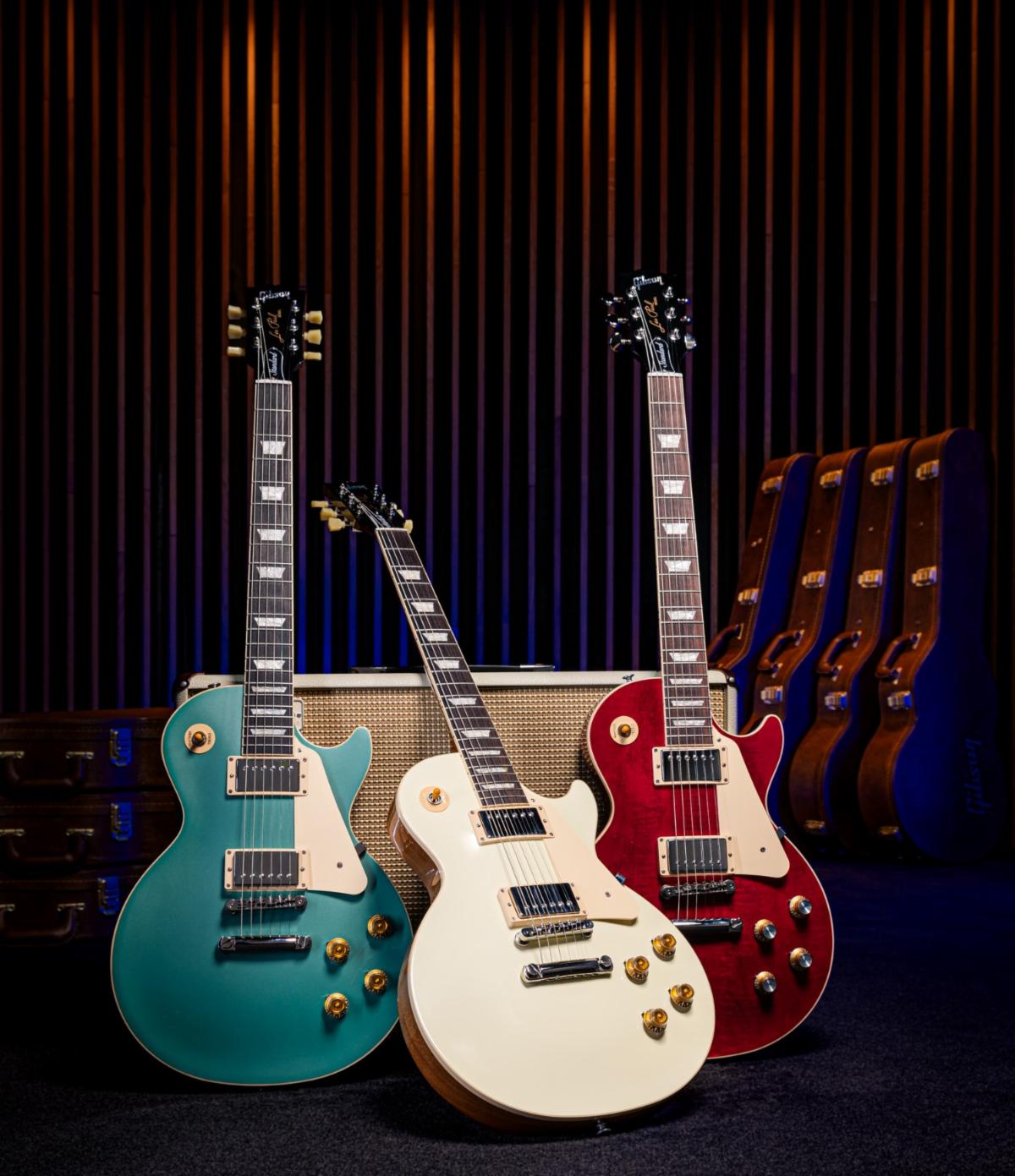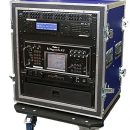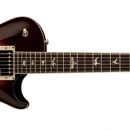Over the past few decades, Yamaha has created a number of legendary instruments. In keeping with the present decade’s movement to make everything smaller, Yamaha now brings us the Reface series: four keyboards with small keys but big sounds. These new keyboards are based on some worthwhile legends, updated with some modern twists.
The Reface CP is modeled after several legendary electro-mechanical pianos, including the CP-80. The Reface CS is modeled after the CS-series analog monster synths, including the CS-80. The Reface DX, as you can easily guess, is modeled after the legendary DX-7. Finally, The Reface YC is modeled after several revered organ models, including the YC-20.
Yamaha has done some interesting things with the Reface series, and while we think they all sound fantastic—and you can play anywhere from battery power, the mini-keys and compact styling will not be everyone’s cup of tea. Still, they have a lot going for them, and the instant gratification with most of them is undeniable, as you’re about to discover.
Features
We’ll start with the similarities: Each Reface has thirty-seven, velocity-sensitive, mini keys, the option to run on six AA batteries, weighs around four pounds, and includes a pair of built-in 2W speakers. Fortunately, AC adaptors are included. Each unit has a volume slider and octave selector, USB port, a MIDI port (that uses a proprietary connector, similar to what IK Multimedia uses in their iRig series), L/R audio outputs, phones jack, foot controller/sustain pedal jack (depending on which Reface you have), and an Aux In jack. Don’t get too excited about the Aux In jack—it’s for connecting iPods and the like; it’s not for processing audio or vocals, which would have been kind of cool.
Unlike the Roland Boutique series, the keyboards are not detachable. While admittedly the key size is something you can get used to, and Yamaha claims they are smaller versions of the keys used in their flagship Motif XF, it’s a shame that such great sounds are mated to a small keyboard. True, you can always connect the reface to a full-sized controller, but how cool would it be to have a compact rack with each Reface unit taking only 1U of space, connected to a master controller? Now that would be something!
One other interesting commonality is that Yamaha has released Reface Capture, an iOS app that allows you to save patches and trade amongst users on line. That’s handy for creating a favorites list, as some of the Reface units don’t have patch memory.
Announced in early January 2016, right before the NAMM Show, was Reface series compatibility with Soundmondo, Yamaha’s new social media site for users of their keyboard products. Soundmondo is one of the first sites to implement WebMIDI, which connects MIDI devices to virtual instruments across the Internet, enabling your local musical instruments to play/control online synthesizers, as well as save or share sounds through the Soundmondo community. Because WebMIDI is implemented within Google’s Chrome browser (and requires its use), Soundmondo is cross-platform and works on Mac, PC, and Android devices.
The Yamaha Reface series are the first instruments (and at this time, appear to be the only) to work with Soundmondo. Reface users now have another way to store, recall, organize and share their sounds. To quote Yamaha directly, “Soundmondo is social sound-sharing for synthesizers. Back in the day, synthesizers had patch sheets where sound re-creation was a manual process of duplicating settings from a printed diagram. Soundmondo instantly sends the sound to your instrument and visually shows you how to re-create it.”
Once you connect your Reface keyboard to your computer and set up an account, you click Create and give your sound a name, a description, and tags. You can even add a YouTube video and SoundCloud audio.
You can easily explore sounds created by other Soundmondo users. The website is well organized, and you can find sounds grouped by composer, genre, or even decade. Clicking Browse shows all available sounds (as per Yamaha, thousands are available, with the list growing as more users get involved). Once you find a sound you like, click on it and hit Sync. This will send the sound to your connected Reface keyboard and show you how to move the controls to duplicate the sound. For Reface DX users, a full editor is available that shows all parameters with full navigation and editing using a computer keyboard.
We have to admit: Soundmondo is pretty cool! Imagine if this had been available years ago for the original synths! This would have really helped us with our classic DX-7 sound programming.
Now that we’ve hit the common things, let’s discuss the individual specifics.
Reface CP

This reface is specifically aimed at electromechanical pianos. As per Yamaha, the specs are:
Six keyboard types (selected by a rotating knob):
- Rhodes I, early ‘70s tine electric piano
- Rhodes II, late ‘70s tine electric piano
- Wurlitzer, late ‘60s reed electric piano
- Clavinet, ‘70s struck string Clavinet
- Toy piano
- Yamaha CP-80 electric grand piano
Effect types:
- Drive
- Tremolo (Auto-Pan for Rd) or VCM Wah with adjustable depth and rate
- Chorus with adjustable depth and speed
- VCM Phaser with adjustable depth and speed
- Digital or Analog-Type Delay with adjustable time and depth
- Reverb with adjustable depth
Happily, you get 128 voice polyphony, so there should be no playability limits. However, the small keys really are a bummer on the CP model in particular, as larger keys are far more fitting for piano-style playing. Since we actually own a real CP-70 (the CP-80 has one additional octave on the keyboard), here’s a study in contrasting size:

A tale of two Yamah keyboards: When past (CP-70) and present (CP) collide.
A big part of the classic CP-70 sound comes from effects, especially the classic analog chorus (just ask Peter Gabriel or Tony Banks), which we use on our CP-70, as seen in the photo. It is great that Yamaha recognizes this and included built in effects—including chorus. Of note, the tremolo/wah, chorus/flanger, and analog delay/digital delay, are set up as pairs and you activate one or the other with a switch, so you can have three, not six, effects at the same time (plus a separate drive control, for a total of four effects).
While the namesake is the CP, don’t be fooled—the Rhodes, Wurli, and Clavs sound excellent. The Reface CP is somewhat reminiscent of Korg’s SV-1, in that you turn a knob to choose your piano, choose your effects, and play. Simple setup; great sound.
Reface CS

Conjuring up its heritage from the CS series of synthesizers, like the mammoth CS-80, and the much smaller CS-01, is the Reface CS. Sporting eight voices of modeled virtual analog, you get a well-organized row of sliders to choose your settings.
The oscillator section allows you to choose from five oscillator types, which are then modified by two other sliders, call texture and mod. Yamaha’s implementation to use these three sliders together is seen in the table below:
| OSC TYPE | TEXTURE | MOD |
| Multi-saw | Adds sub-oscillator | Layers multiple sawtooth waves |
| Pulse | Changes pitch of second pulse wave | Changes pulse width |
| Oscillator Sync | Changes pitch and tone of second oscillator | Sets pitch change amount |
| Ring Modulation | Changes pitch of first oscillator | Changes pitch of second oscillator |
| FM | Sets modulation amount | Changes pitch of the modulator |
Moving towards the right, the filter section controls a low-pass filter with cutoff and resonance sliders.
The next section controls the envelope generator, and besides the expected ADSR sliders, there is another slider controlling “AEG and “FEG”. With the envelope generator slider fully down, this is set to AEG (amplifier), with FEG (filter) at the top. This controls the envelope’s destination, allowing for more sonic colors.
In the right-most area are the effects, where you can choose from distortion, delay, chorus/flanger, phaser, or no effect. A portamento slider is also provided, though there is no actual modulation wheel physical present.
An interesting inclusion on the CS is the phrase looper, which is an essentially a free-running MIDI sequencer that can record up to 2,000 notes. It also allows overdubbing and parameter tweaking in real time. Of note, there’s no way to save these loops unless you record the audio into a DAW.
For those gearheads who like specifics, the low-pass filter is an 18dB-per-octave slope, and the architecture is that an oscillator feeds the low-pass filter with a single LFO and envelope for modulation. As described earlier, the oscillator has five modes that are each modified by the Texture and Mod sliders. It’s a pretty nifty way of getting more sounds out of a small device!
Reface DX

Yes, this one is modeled after the mighty DX-7 which took the world by storm back in the Eighties. However, the DX-7 was a six-operator synth, while the Reface DX is a four-operator synth, making it more like the DX-9 and DX-100 variants (which were popular back in the day because they were cheaper than the DX-7). You get eight voices of FM synthesis, and fortunately, Yamaha has made it easier to get at them to edit.
The Reface DX has twelve preset FM algorithms, and each operator has its own four-stage envelope. Also, the original DX-7 produced sine waves only, whereas the reface allows modification towards sawtooth and square waves by use of a feedback loop. The bad news is that you only get thirty-two presets in which to save your sounds (all editable); we would have liked more onboard memory. Yamaha’s compromise is somewhat relieved in the form of software: as mentioned earlier, the Reface Capture iOS app lets you save patches and trade among users on line. This essentially gives you a limitless supply of sounds, but technically speaking, it isn’t an onboard memory bank.
The Reface DX sports a nice, backlit LCD with graphical representations of every button you press on the LCD screen, and then four sliders to the left screen provide up/down value controls. FM synthesis, combined with puny screens in the ‘80s, made editing a formidable task, but Yamaha has now made this process much easier via graphics on a larger screen.
Another nice inclusion are effects, which include distortion, phaser, chorus/flanger, and delay. You also get a touch-sensitive wah and a basic hall reverb. Similar to the CS, there’s also a phrase looper, but again, no way to save your patterns.
We were impressed by the striking Rhodes sound, here in all its glory, and at the same time, there were plenty of sounds that were quite modern. Those inclined to program should be able to get a lot of this synth, and it is now a heck of a lot easier to do than on the original devices.
Reface YC

With its red casing, the Reface YC is perhaps the most visually stunning of the four Reface keyboards. This is not only a nod to Yamaha’s vintage YC series organs, but also to several others as well. A simple knob with five settings lets you chose. As per Yamaha, the choices are:
- Hammond, American tonewheel organ
- Vox, British transistor organ
- Farfisa, Italian transistor organ
- Ace Tone, Japanese transistor organ
- Yamaha YC-45D
The inclusion of the transistor organs is great, and anyone who’s ever heard a Doors, Specials, or Elvis Costello song has likely heard one of these organs. You get all the drawbars (in shortened form), which is interesting because some of the original organ models didn’t even have all the drawbars, so you are able to create sounds that technically weren’t possible in the originals (which to us is a good thing).
There’s a built in Leslie speaker simulation with control over the rotary speed, as well as distortion, reverb, and percussion. You also get chorus and vibrato (but not at the same time). A nice touch is that besides slow and fast rotary speed settings, there’s also a “stop” setting, emulating a braked Leslie, which is different than turning it Off, adding to the realism.
Once again, we were impressed by the sound quality—even through the built in speakers! With 128-voice polyphony, you should be able to comp some fantastic organ chords.
Usability
The Reface keyboards as a whole are quite easy to use. Each Reface instrument has a very specific sound, and the controls are designed to get you where you need to go quickly. Unlike more complex synths, there’s no menu diving to scroll through, and in the case of the DX—the only unit with an LCD display, the various parameters show up in a graphical way, making tweaks really quite easy.
The CP probably suffers the most from the small mini-keys, reflecting our desire to play as we would on an acoustic/electro-mechanical piano. The key size actually kind of grew on us on the other Reface units, particularly when we noodled around with synth leads on the DX.
We found it a little surprising that the CS synthesizer doesn’t have patch memory—that would have been useful. While the Reface Capture iOS app does a pretty good job of saving and organizing sounds—and it even enabled us to create set lists, the iPad becomes another device to carry, plus the custom connecting cable. This negates the whole premise of building the Reface units for simple, portable use.
Make no mistake: given the high quality sounds, build quality, and ease of operation, we are disappointed there’s no good way to integrate these keyboards into a professional keyboard rig. If they were rack-mountable, we would buy all four of them! And because each Reface unit is wider than nineteen inches, we can’t even place one of these beauties on a shelf in a standard rack to use it as a sound module in our live rigs. A standard, five-pin DIN MIDI jack would have been more practical, too, though the supplied adapter cable worked fine for basic computer connectivity.
Sound
This is the Reface series’ strongest suit, which is why we’re so tormented by the form factor. Each one of these sound great, and could easily fit into a pro rig from the sound perspective. Even through the built-in speakers there was a surprisingly good sound, which makes this a fun sit-on-the-couch-and-noodle device. But obviously for live use you’ll need an amp/mixer.
CP: From Keane to Steely Dan to Genesis to Supertramp to Stevie Wonder, it’s all in here! The CP-80 piano sounds great, and the chorus effect is right on. We have a Rhodes Mark 1 in our studio as well, and the reface CP did well in that department (whether you prefer Mark 1 or 11 is a matter of taste, but both sound excellent). The Wurli will get you playing Queen in a hurry, and the toy piano has become useful playing many of today’s modern radio hits. The clav, while still sounding good, was our least favorite/useful sound, but it’s no slouch by any means.
CS: This is a fun synth! Much like Roland’s classic Juno 106, just move the sliders and make cool sounds! Pulsating rhythms with complexity are possible, especially when created sounds are then put into the looper, which you can then overdub and tweak in real time. Between the synth section and the effects, you can come up with some surprisingly beefy sounds. Did we mention it was fun?
DX: Some of the classic DX-7 sounds are in here, including the ubiquitous Rhodes sound in all its glory. Having said that, there’s basses, pads, and funky sounds that will cover both retro and modern styles. Those of us old enough to appreciate the Eighties will enjoy this synth, and those younger will appreciate the more modern sounds this little synth is capable of.
YC: Perhaps the biggest surprise of the four, we were quite impressed by how good all these organs sounded. The Leslie, distortion, and percussion emulations were quite convincing, and although the drawbars have a much shorter throw than on a full-sized organ, they are still quite usable. The effects are excellent as well. We have used Nord keyboards in both studio and stage settings, and while those may hold a sonic edge, the difference in sound quality is surprisingly small (and with a price gap of thousands of dollars). We would definitely not be afraid to use any Reface sounds in a professional setting.
Documentation and Product Support
Each Reface comes with a paper manual, that (interestingly) covers all four Reface instruments. There are diagrams and explanations in the manual, which are both succinct and helpful. Beginners will appreciate explanations of “How does the sound change when I do this?” There are also videos on the website.
Price
Each Reface instrument (MSRP $799) sells for approximately $499. We think there are two ways of looking at the Reface series. To quote our colleagues at Yamaha, “The idea of Reface is something to ‘Create your sound any place, any time,’ which wouldn’t really be possible if these were housed in a rack.” When put in that light—having great sounds you can use anywhere—Yamaha has absolutely succeeded in what they were aiming to do. The Reface units sound great, are easy and fun to use, can be brought anywhere, and have great computer/software connectivity.
The other side of the coin is that for those of you that fall into the “serious musician” category, are you really going to play anything with mini keys? You could, certainly, but we suspect most of our readers would prefer the experience of playing great sounds from a full-sized keyboard. This is actually a backhanded compliment to Yamaha: because the sounds are so good, we want a bigger keyboard, or at least a more useful form factor.
Nevertheless, the great sound alone is enough to make all four of these keyboards worthwhile to check out.
Contact Information
Yamaha
usa.yamaha.com
Overall Rating - Product Summary
| Category | Value | Rating |
| Features | 20% | |
| Usability | 25% | |
| Sound | 25% | |
| Documentation & Support | 10% | |
| Price | 20% | |
|
|
||
| OVERALL RATING = 3.4 Stars
3.6 stars or better: Outstanding, WIHO Award |
||
Evaluation Short-List
Roland Boutique series
Novation MiniNova
Korg MS-20
Roland JD-Xi


